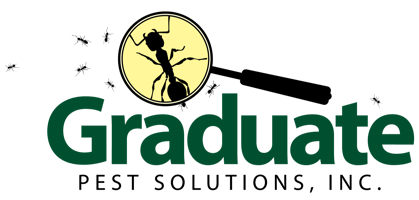We’ve previously covered how to tell the difference between a termite swarmer and a flying ant. If you’ve taken a closer look, used our descriptions, and come to a conclusion, you may have questions on how to handle the situation. There are different factors that can impact what the best steps are for tending to a termite swarm. The most important factor is speed. As you know, termites can cause hundreds, to thousands, of dollars of damage to your home.
The signs of a termite swarm are important
The same signs that help discern that you’re dealing with termites are how we determine the potential severity of a termite infestation. The most common of which when contending with a termite swarm is discarded wings. These are semi-transparent insect wings of similar sizes. Typically, there are four wings per termite swarmer, but you may come across many more depending on the number of potential colony kings and queens that have found your home. After they’ve finished mating, they tend to shed or bite off their wings. A significant number of discarded wings can be a sign of a serious infestation.
Does killing the termite swarm end the threat?
Killing the visible swarmers won’t stop the damage being done to your home, because the worker termites are still present. Surprisingly, swarmers don’t forage for their own food. The worker termites consume wood, and they actually feed the swarmers with regurgitated wood.
Other signs can signal seriousness
We covered the signs of termites beyond just the discarded wings. You should look for these additional concerning signs of an infestation:
- Mud tubes: Subterranean termites build mud tubes near the foundation of the home to maintain moisture and provide protection. They use it to travel between the colony (in the ground) and the food source, your home’s wood framing.
- Damaged wood: Wood that sounds hollow when tapped on and feels soft or appears darker.
- Uneven or bubbled paint: This can usually mean one of two things such as water damage or a termite infestation!
The next step
There are a few different methods of handling termites and termite swarms. Regarding the swarmers, start by vacuuming them up. They will usually subside over the upcoming week on their own. Consider them as a harmless nuisance and a welcome friend. Why you say, because they are alerting you to a serious problem that needs to be addressed. Damage to your home has been going on for a while. Termite swarmers are a result of a mature colony with thousands of chewing, wood-eating termites!
Do-it-yourself termite control can be tricky, depending on your home’s age and construction you are usually better off contracting with a professional. The most common methods for treating termite infestations are:
- Termiticide: A liquid treatment that requires a trench to be dug around the foundation perimeter with the treatment being poured in. Where concrete and blacktop abut the foundation, holes are drilled every 12 to 18 inches and the termiticide is pumped into the soil below under pressure. The termites pass through the treated soil, bring the product back to the colony and infect their nestmates.
Baiting Systems: An integral part of a termite baiting system is the baiting station. These stations are placed in the ground around your home’s foundation. The termites find and feed on the bait matrix inside and bring the bait’s active ingredient back to the colony, sharing it with their nestmates. Given time the colony dies off from consuming the bait. This unique active ingredient is known as a chitin inhibitor and prevents the termites from molting and growing. It is considered to be environmentally friendly because it only affects the termites and does not move into the soil and adjacent areas. The active ingredient only leaves the baiting station with the termites on their way to the colony!
Hiring a pro is the safest move
We are biased, of course, because we offer termite treatments. We have successfully eradicated termites from hundreds, maybe thousands, of homes over the course of the years. This experience means we know what works. Many homeowners have tried to get rid of termites on their own and still require our help.
Call us at 413-566-8222 or contact us if you think DIY is DIWhy. We have the knowledge and the services to correct your infestation. Ask Graduate about our preventative annual plans to keep your home pest-free year-round!
YOU MAY ALSO LIKE
These related articles

